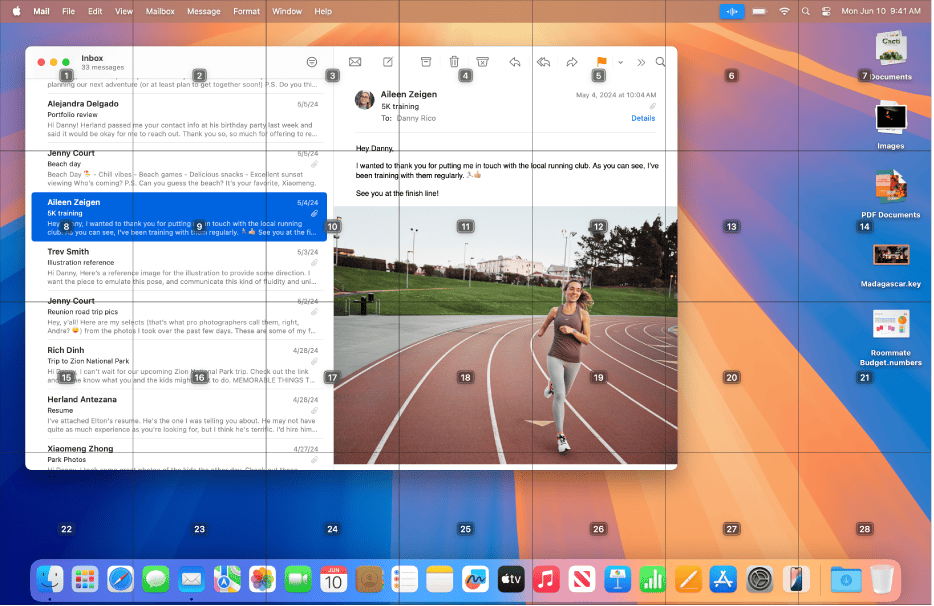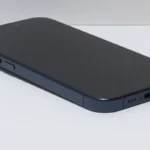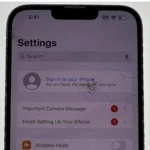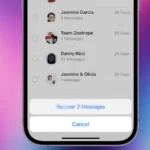Apple has officially revealed a sweeping lineup of accessibility enhancements coming later in 2025, reaffirming its position as a leader in inclusive technology. The newly announced tools are designed to empower users with disabilities by offering greater control, customization, and independence across iPhone, iPad, Mac, Apple Watch, and even Vision Pro.
Magnifier App Comes to Mac: A New Vision Tool for the Desktop
One of the most anticipated additions is the Magnifier app for Mac, a powerful tool already familiar to iPhone and iPad users. This version expands its functionality by letting users connect an external camera—such as an iPhone or USB webcam—to their Mac, turning the large screen into an adjustable digital magnifier.
People with low vision will be able to zoom in on printed materials, objects, or surroundings using the connected camera. Users can also fine-tune brightness, contrast, and color filters, making it easier to read text on documents or see details in dim lighting. It’s an essential enhancement for educational, professional, and everyday use.
Accessibility Reader: Customizable Support for Visual and Cognitive Needs
Apple is also launching an Accessibility Reader, a system-wide feature designed for users with dyslexia, low vision, or cognitive disabilities. Unlike traditional reading tools, Accessibility Reader integrates across apps and even works with physical documents via the Magnifier.
Key customization options include:
- Font style and size adjustment
- Background and text color settings
- Line and character spacing
- Optional read-aloud voice support
These tools are built to reduce cognitive load and visual strain, making extended reading sessions easier and more accessible.
Accessibility Nutrition Labels in the App Store
In a move aimed at transparency and informed choice, Apple is introducing Accessibility Nutrition Labels in the App Store. These labels will detail an app’s support for:
- VoiceOver
- Dynamic text resizing
- Switch Control
- AssistiveTouch
- Closed captions
- Braille displays
This feature allows users to quickly determine whether an app meets their specific accessibility needs—before downloading it. It’s a valuable addition for users and caregivers alike who want to avoid wasting time on non-compliant apps.
Expanded Braille Support Across Devices
Apple is taking Braille support to a new level. The upcoming features will transform iPhone, iPad, Mac, and Apple Vision Pro into full-featured Braille note takers. These devices will support:
- Custom Braille input
- Advanced navigation
- Mathematical equations using Nemeth Braille
- Real-time editing and document review
This goes beyond mere compatibility—it’s a step toward parity in education and professional environments where blind users require full control over their digital workspace.
Live Captions on Apple Watch
Another noteworthy addition is Live Captions on Apple Watch. Previously limited to larger devices, this feature brings real-time transcriptions to the wrist, enhancing communication for those who are deaf or hard of hearing. Whether you’re on a call or listening to an audio message, the Apple Watch will display spoken content in real-time.
This improvement reflects Apple’s goal of ensuring that accessibility is woven into every product—not just smartphones or tablets.
These updates are expected to roll out with iOS 19, macOS Sequoia, and related platform updates later this year. Apple’s long-standing dedication to accessibility isn’t just about compliance—it’s about designing technology that’s inherently inclusive from the ground up. With features like Magnifier on Mac, Braille across devices, and real-time captions on Apple Watch, Apple continues to set the benchmark for accessible innovation in consumer tech.
Key Takeaways
- Apple’s new Magnifier for Mac and enhanced Braille support will help users with visual impairments access technology more easily.
- The App Store will now show accessibility nutrition labels to help users find apps that meet their specific needs.
- These updates continue Apple’s mission to create technology that works for everyone regardless of ability.
Apple’s Major Accessibility Enhancements
Apple has unveiled several groundbreaking accessibility features designed to help users with different abilities interact with their devices more effectively. These enhancements focus on visual assistance, braille support, and voice control options.
Magnifier Tool for Mac
The new Magnifier app for Mac marks a significant step forward for users who are blind or have low vision. This powerful tool allows users to explore, learn, and interact with content on their screens more easily.
Users can connect USB cameras to their Mac to examine objects and text in their environment. The Magnifier can zoom in on details and enhance contrast to make elements clearer.
The tool includes several viewing modes to suit different visual needs:
- High contrast mode for better text visibility
- Color filters to help those with color blindness
- Text recognition capabilities to read printed text aloud
When paired with VoiceOver, the Magnifier becomes even more useful. It can describe objects in frame and provide spatial awareness cues to help users navigate their surroundings.
Expanded Braille Support
The Braille Access feature transforms Apple devices into versatile braille tools. This new experience works across iPhone, iPad, Mac, and even Apple Vision Pro.
Braille Access supports multiple braille formats, including:
- Standard literary braille
- Nemeth braille for math and science
- Braille Ready Format (BRF) files
The system connects seamlessly with external braille displays and note takers. Users can now read, write, and edit documents in braille without switching between different programs or devices.
Apple has also enhanced braille screen input, making it easier to type in braille directly on touchscreens. This improvement helps braille users communicate more efficiently.
For students and educators, the support for specialized formats like Nemeth braille opens up new possibilities in STEM education.
Advanced Voice Control Features
Voice control options have received major upgrades in this release. These improvements make Apple devices more accessible to people with physical limitations or speech differences.
The Personal Voice feature allows users to create a synthesized voice that sounds like their own. This is especially valuable for people at risk of losing their ability to speak.
VoiceOver has become smarter with better recognition of on-screen elements. It can now describe images in greater detail and navigate complex interfaces more effectively.
Spoken Content features read text aloud with natural-sounding voices and intelligent pacing. The system automatically adjusts for different types of content like lists, tables, or paragraphs.
Voice commands now work with more apps and system functions. Users can control nearly every aspect of their device using only their voice.
Additional Accessibility Upgrades and Innovations
Apple’s latest accessibility features extend far beyond the new Magnifier for Mac and Braille Access. These innovations aim to make technology more usable for everyone, regardless of ability, with thoughtful upgrades across all Apple devices.
Live Captions and Real-Time Accessibility
Live Captions has received significant upgrades across Apple devices. This feature now supports multiple languages, including Spanish and Chinese, making content more accessible to non-English speaking users.
Real-time Live Captions work with FaceTime calls, streaming content on Apple TV+, and even in-person conversations. The system processes speech locally on the device, ensuring privacy while providing accurate text transcription.
Sound Recognition has been improved to detect more environmental alerts like doorbells, sirens, and appliances. This helps deaf and hard-of-hearing users stay aware of their surroundings.
Hearing health features have expanded with better Live Listen capabilities on AirPods. Users can now adjust sound amplification levels more precisely to match their specific hearing needs.
Universal Usability Across Devices
The new Accessibility Reader simplifies text across devices, making content easier to understand for users with cognitive disabilities. It removes complex language and unnecessary elements while preserving essential information.
Continuity Camera with Desk View now includes accessibility-specific features. Users can scan physical documents and have them instantly converted to accessible digital text.
Apple has introduced a feature to share accessibility settings between devices. This allows users to set up preferences once and have them apply across iPhone, iPad, Mac, and Apple Vision Pro.
Switch Control, Head Tracking, and Eye Tracking have all been enhanced for better precision. These improvements make navigation possible for users with limited mobility through subtle movements.
Enhanced Visual and Cognitive Support
Color filters and contrast settings now include presets designed specifically for dyslexia and other visual processing differences. These can be customized further to meet individual needs.
Zoom functionality works better across apps, with smart focusing that predicts which screen elements need magnification. Text remains crisp even at high zoom levels.
Background Sounds feature now includes more options to help users with sensory sensitivities focus better. These sounds can automatically adjust based on the user’s environment.
Music Haptics creates vibration patterns that match rhythm and beat, allowing deaf users to feel music through Apple Watch or iPhone. Vehicle Motion Cues provide similar haptic feedback in navigation apps to signal turns without visual attention.
Commitment to Accessibility and Inclusion
To mark Global Accessibility Awareness Day, Apple introduced Accessibility Nutrition Labels for App Store apps. These labels help users quickly identify which accessibility features each app supports.
App developers now have expanded tools to implement accessibility features. Apple provides testing frameworks specifically designed to catch accessibility issues before release.
Apple has partnered with advocacy organizations to ensure their accessibility features meet real user needs. Input from deaf, blind, and mobility-impaired communities shaped the latest updates.
The company emphasizes that accessibility is a fundamental right. They’ve made their accessibility documentation public to encourage other technology companies to follow similar standards.
Frequently Asked Questions
Apple’s new accessibility features bring significant improvements for users with diverse needs. These updates focus on visual aids, Braille support, and enhanced device control options.
How will the new Magnifier feature for Mac improve accessibility for users with visual impairments?
The new Magnifier for Mac will help users with low vision see their physical surroundings more clearly. This feature works much like the mobile version but is optimized for the Mac platform.
Users can adjust brightness, contrast, and apply various filters to make text and objects easier to see. The system also allows saving custom views for different situations.
This tool bridges an important gap for Mac users who previously had to switch to mobile devices for magnification tasks.
What types of Braille displays will be supported by Apple’s latest accessibility update?
The new Braille Access Mode will work across iPhone, iPad, Mac, and Apple Watch devices. This update supports a wide range of refreshable Braille displays from various manufacturers.
The system will be compatible with both six-dot and eight-dot Braille formats. It also supports contracted and uncontracted Braille in multiple languages.
Users can expect seamless integration with both USB and Bluetooth Braille display hardware.
In the latest accessibility enhancements, what additional functionalities can users expect to see integrated into Apple devices?
The new updates include Accessibility Nutrition Labels in the App Store. These labels will help users quickly identify which apps best match their accessibility needs.
Apple is also improving voice control functions across devices. Users will gain more precise command options and better voice recognition accuracy.
Visual customization tools will offer expanded options for color filters, contrast settings, and text display preferences to suit individual needs.
Are there any software or hardware prerequisites to enable the new accessibility features on Apple devices?
Most new features will require the latest operating system updates across Apple devices. iOS 19, macOS 16, and watchOS 12 will all include these accessibility improvements.
For Braille support, users will need compatible Braille display hardware. The Magnifier for Mac will work on most recent Mac models with no additional hardware needed.
Some advanced features may require newer device models with more processing power or specific sensors.
How does Apple’s commitment to accessibility impact the development of its mainstream products?
Apple integrates accessibility considerations into its core design process rather than treating them as add-ons. This approach benefits all users through more intuitive interfaces.
The company regularly consults with disability advocacy groups and specialists to ensure their products address real needs. This collaboration leads to innovations that often become standard features.
Many accessibility features like voice control and display customization have found widespread use among all Apple customers.
What training or support options will Apple offer to help users take full advantage of the new accessibility enhancements?
Apple plans to provide detailed guides and tutorial videos focused specifically on the new accessibility features. These resources will be available on their website and through device help systems.
The company will offer specialized training sessions at Apple Stores through their Today at Apple program. These hands-on workshops will help users understand how to customize settings for their needs.
Apple Support representatives are receiving additional training on the new features to better assist customers by phone, chat, or in person.







